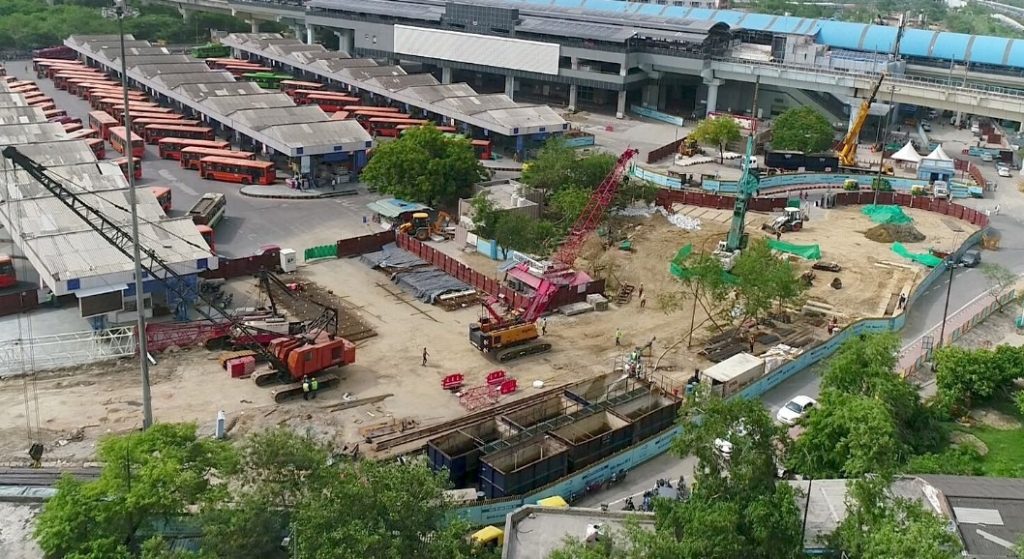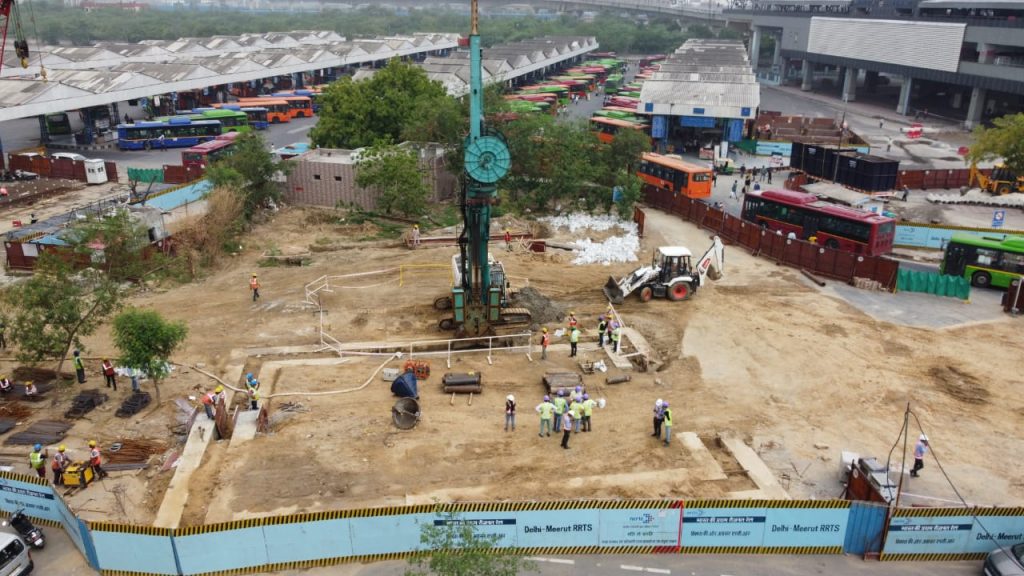The construction of launching shaft commenced today in Anand Vihar, Delhi for Tunnelling work. The first Diaphragm Wall (D-Wall) panel reinforcement cage of size of about 20 m deep (equal to height of a 10-storey building) and 5 m wide was lowered and concreted. With this milestone, construction of underground section for RRTS has entered the next stage.
D-wall acts as a shield or frame to balance the earth pressure, thereby reducing the possibility of soil collapse and also prevents water seepage during excavation.
This Launching Shaft is 20 m long and 16 m wide, located at South side of Anand Vihar underground RRTS station. Two Tunnel Boring Machines (TBMs) will be lowered in this shaft to bore RRTS twin tunnels from Anand Vihar towards Sarai Kale Khan.
The total drive of these two TBM machines will be around 3 Kms. It will be the longest tunnel section between any two stations amongst the available Metro Systems in the country. An air ventilation shaft will be constructed in between this large section connecting both sides of tunnels, for ensuring safety of passengers during any emergency. Emergency evacuation facility for passengers is also being constructed to facilitate safe exit of passengers from tunnels, in a rare eventuality requiring evacuation.
Parallelly, construction of north tunnel launching shaft will start soon to bore twin-tunnels of more than 2 kms length from Anand Vihar towards Meerut.
These tunnels will be of higher diameter as compared to that of Metro systems in the country due to larger rolling stock and higher design speed of 180 Kmph in case of RRTS. The internal clear diameter of these tunnels is 6.5 m to reduce the air pressure and discomfort to passengers, due to generation of shock waves in tunnels because to higher speed of these trains.
NCRTC team is making best efforts to recover the time lost due to impact of second wave of COVID-19 restrictions on the construction activities and supply chains.. The construction activities are being carried out while following COVID appropriate behaviour at sites, with due safety protocols in compliance to COVID SOPs.










